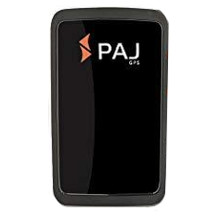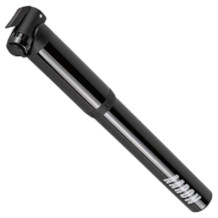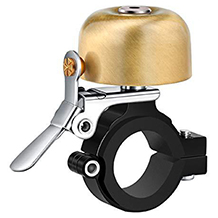Folding bike lock purchasing advice: how to choose the right product
- What You Need to Know
- Folding locks can be folded up like folding rules and stored in a space-saving way.
- Manufacturers classify bicycle locks according to specially defined protection classes: According to the classification, folding locks usually offer medium to high protection.
- Locking methods include key and numerical code.
- In high-quality folding locks, not only the links and joints are made of hardened steel, but also the locking cylinder.
- The heavier a folding lock is, the more robust the materials used and the more secure it is.
Folding lock: Between security and everyday usability
A brief moment of carelessness – and your new bike is gone. Just a few minutes while you are at the bakery, for example, are enough for thieves to steal the bike. Before this happens, it is worth investing in a robust bicycle lock. While no lock offers one hundred percent protection, it takes time to pick it. The more time robbers need to open a bicycle lock, the higher the chance of getting caught. That’s why, according to the ADFC (Allgemeiner Deutscher Fahrrad-Club e.V.), they usually work for three minutes at most before looking for another victim. However, the most secure bicycle locks are often heavy and unwieldy, be they large U-locks or chain locks with thick links. Light and flexible cable locks, on the other hand, are easy to handle but rarely offer the necessary protection.
Folding locks combine handiness with security: they protect better than cable locks, but do not come close to the best U-locks. Thanks to their compact dimensions, they are easy to transport. When folded, they resemble a folding rule. As a result, the locks fit easily in the pocket or on the frame of the bicycle. The foldability of this type of lock is due to the joints that connect the rigid and flat links. At one end there is a housing in which the locking cylinder and mechanism are integrated. Depending on the model, this is a key or numerical code design.
What matters when buying
Folding locks are practical if you are looking for a compact and at the same time secure bicycle lock. As with all locks, there is a wide range of security available. You can tell the difference between high-security folding locks and virtually useless ones by looking at the following features.
Security levels
Bicycle locks are each marked with a certain security level. This indicates how well the lock is protected against violent attempts to break it open. The higher the level, the more secure the lock. However, there is no general rule: each manufacturer has its own level system according to which it classifies its bicycle locks.
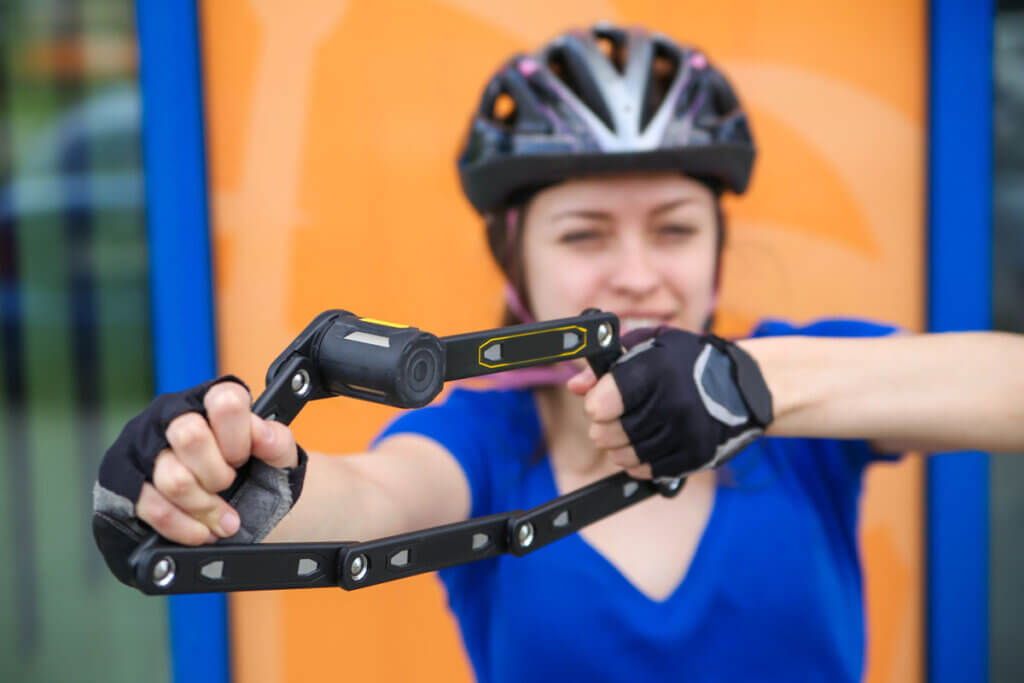
The manufacturer ABUS, for example, has established a 15-level system consisting of the following criteria: security features such as locking or cylinder technology account for 75 percent of the overall rating, ease of use and automatic locking systems for 20 percent and design for 5 percent. Other manufacturers, such as Trelock or Kryptonite, only determine the break-in security. Consumers are denied information about how the testers rate their models. They can only rely on tests by independent consumer magazines, test seals and certifications.
Only in rare cases do folding locks have the highest security level of a manufacturer: both ABUS and Trelock have only one corresponding model in their range, while Kryptonite does not offer a folding lock of this type. Most folding locks from well-known brand manufacturers have a medium to high security level. It is advisable to choose a level that is as high as possible, for example from level ten with ABUS and level four (out of six) with Trelock.
The most important testing institutions
The two most important places to go for meaningful and, above all, independent assessments are the VdS (Vertrauen durch Sicherheit) and the ADFC – Allgemeiner Deutscher Fahrrad-Club e.V. (German Bicycle Club).
VdS is a renowned institution that specialises in corporate security and also tests security products within this framework. Bike locks that have been awarded a VdS seal of approval are considered very secure in police and insurance circles.
The ADFC is an association that represents the interests of everyday cyclists. It tests bicycle locks according to a procedure that is based on the European standard DIN EN 15496 and determines the suitability for everyday use in addition to the security aspect.
Locking mechanism
Locking cylinders must be able to withstand being forced open for a period of three minutes. The way in which the device can be locked – with a key or with the help of a numerical code – is not important from the security point of view. The cylinder material used is much more important. Many manufacturers also use dumbbell pins or special spear elements such as a pull guard to increase the break-in resistance of the locking cylinders. As far as the key variant is concerned, there is also a secure alternative to classic locking cylinders in the form of so-called turntable cylinders: Instead of pins, they have closely spaced discs that the key turns into the correct position.
Smart folding locks that can be opened and closed via app are hardly available. One exception is the ABUS Bordo 6500A SmartX folding lock with Bluetooth and alarm system for a price of more than 200 euros. The two widely used locking devices with key or numerical code each have their own advantages and disadvantages.
Folding lock with key
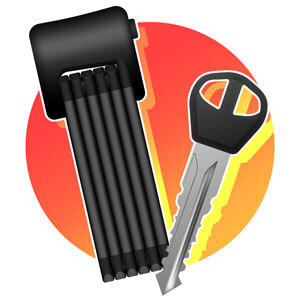
A provision with a key is the most popular and simplest variant: users do not have to memorise numbers or passwords to open the lock. Since there is no need to enter a code, unlocking is quicker in both good and poor light conditions. However, there is a risk of misplacing the key or leaving it on the road. In addition, the key can break off. Make sure that the manufacturer offers replacement keys and that more can be ordered.
Folding lock with combination code
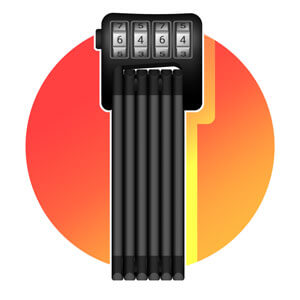
This version has a device with four to five turning wheels on which the digits zero to nine can be set. The cyclist moves these so that the wheels produce a fixed numerical code. If the sequence is correct, he can open the lock. Unlike a lock with a key mechanism, you cannot lose the code or leave it lying around. However, if you have forgotten the numerical code, for example because you do not use the bike in winter, you have to pick the lock.
Material and weight
The material and its workmanship determine how well the folding lock protects you: It has to be hard and unyielding to withstand various burglary tools. Therefore, the links, the joints and the lock cylinder of folding locks with a high security level are made of hardened steel. The weight of the lock indicates the quality of the materials used. The higher the weight of the folding lock, the thicker and more resistant the metal. Secure models weigh between 1,000 and 1,600 grams.
Make sure that the lock cylinder inside the housing is made of metal and not plastic: Some folding locks have robust links and joints, but the lock cylinder is vulnerable. To prevent the heavy steel from damaging the frame of the bike, it makes sense to cover the links with rubber or silicone.
Dimensions
Folding locks are available in lengths from 75 to 120 centimetres, with an average of about 85 centimetres. This makes them suitable for all bicycle sizes and types. From a size of 100 centimetres, even two bicycles can be connected at the same time. Oversized models, especially if they are made of hardened steel, are heavier and more expensive than average locks, but offer more leeway when connecting them. For example, you can lock the wheel to a thick post or a tree. However, they are no more difficult to break than shorter versions, which is why the security factor is not a criterion for the dimensions.
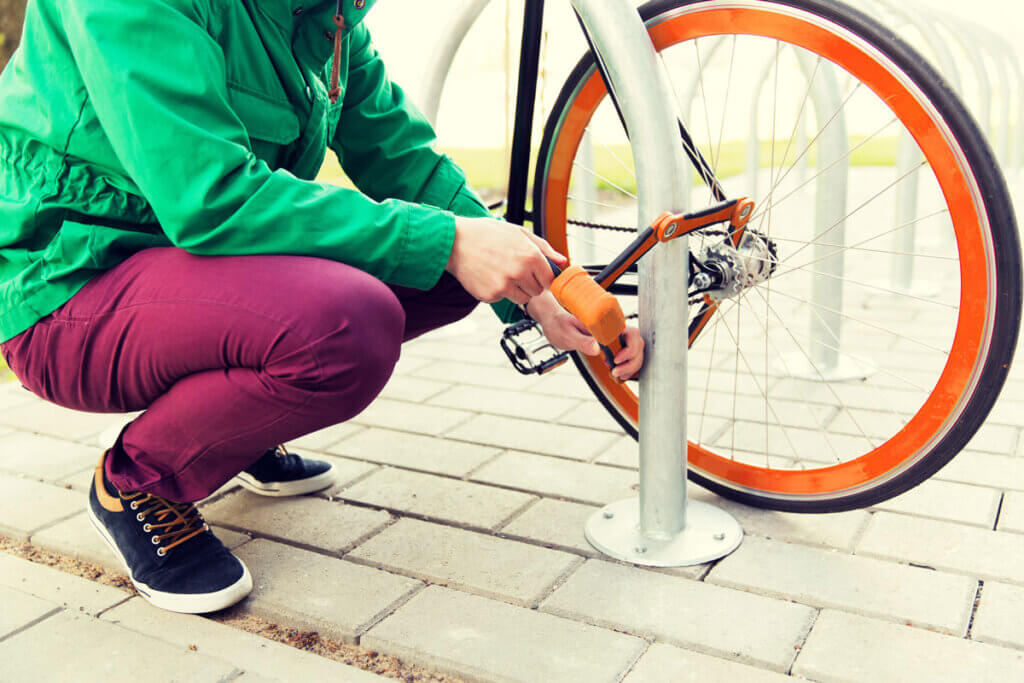
Price
The more secure a folding lock is, the more expensive it usually is. This is due to the more robust materials and higher-quality workmanship. For the highest possible security level from well-known manufacturers such as Abus or Kryptonite, you often pay more than 100 euros. For anyone who wants to secure an expensive bicycle, it can be well worth choosing the most secure version.
If you don’t own a bike costing several 1,000 euros and are unsure what a reasonable price is, you can base your purchase of a folding lock on the price of the bike you want to secure: It is advisable that the lock costs at least one tenth of the price of the bike. A suitable bicycle lock for a 600-euro bike will therefore cost at least 60 euros.
If you have bicycle insurance, it makes sense to secure the means of transport with a lock costing at least 50 euros anyway, otherwise the insurance will not cover theft.
Accessories
To make it easy to transport a folding lock while cycling, it is often supplied with a suitable holder that users can attach to the frame with Velcro. This ensures that the lock is always in the right place and is not accidentally left at home because the cyclist has changed bags, for example.
In addition, an included spare key is important in case the main version is lost. In some cases, a code card is also included. With the help of the code, owners can easily reorder a new key in case they have lost both keys. Without such a code, in this case they have no choice but to pick the lock to get back to their bike.
Another practical accessory is a bag or cover that you can use to protect the lock cylinder from dirt and moisture. If the bag also has a rattle protection, you will not hear the lock when riding.
If you often ride in the dark, for example in the early morning or late evening, you may have problems seeing the lock or the key. LED lights on the key as well as on the lock are practical to make locking the bike easier.
Alternatives
Besides folding locks, there are other types of bicycle locks: U-locks, armoured cable and spiral cable locks, chain locks and frame locks.
The two-bike lock principle
One method of increasing theft protection is to use two bicycle locks, for example a folding lock and a U-lock. Two or even more locks rob thieves of precious time to make off with the bike. Moreover, many specialise in picking only one type of bicycle lock.
U-locks are by far the most secure models. This is because the U-shaped shackle consists of only one piece of steel attached to a solid locking bolt. The particularly heavy and sturdy top models can hardly be successfully cracked on the open road even with bolt cutters. However, U-locks are very unwieldy due to their shape: not only are they difficult to place on the bike for security, but they are also difficult to transport without a suitable bracket on the top tube or seat tube.
Cable locks consist of a lock and a flexible cable, which is usually made of steel. There are also versions with spiral cables. Both conventional models and spiral cable locks offer only a low level of protection. A higher level of security is provided by armoured cable locks, whose steel cables have an additional steel cover and a textile or plastic coating. However, they do not come close to the protection offered by high-quality U-locks or folding locks. All cable variants are easy to attach and transport.
Chain locks are similar in structure to (armoured) cable locks, but instead of a cable, a steel chain is used. If the chain consists of thick links, it is as break-proof as the best U-locks. At the same time, chain locks are the heaviest bicycle locks: The New York Legend chain 1590 from Krypotonite, for example, weighs 4.31 kilograms. Therefore, chain locks are not suitable for travelling, but rather for stationary protection.
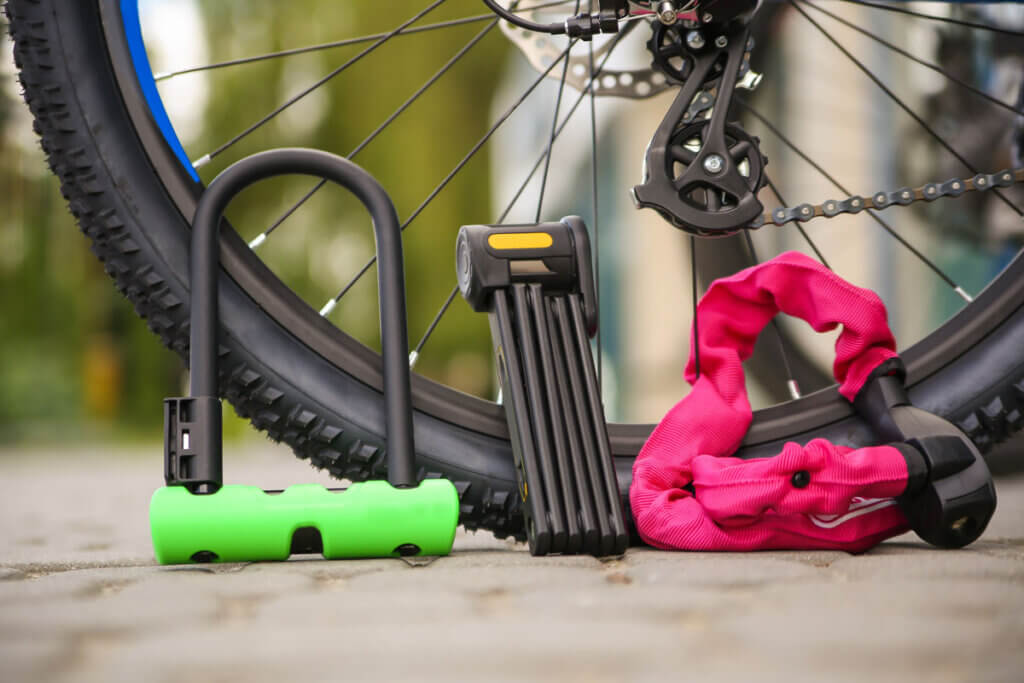
So-called frame locks are immobilisers: they prevent the wheel from turning, but cannot be attached to a post or tree. Instead, you guide the lock through the spokes and the frame. It is not suitable as a sole anti-theft device, as any thief with some muscle power can carry the bicycle. Together with a folding, U-lock or chain lock, on the other hand, a frame lock provides additional protection: the spoke to which it is attached cannot be stolen so easily.

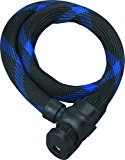
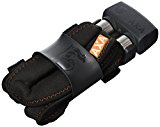
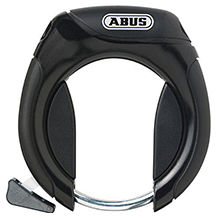
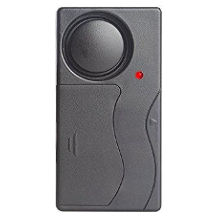

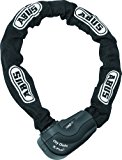
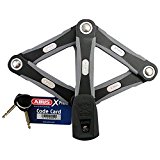

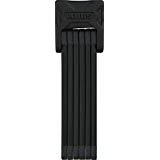
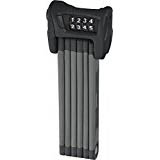
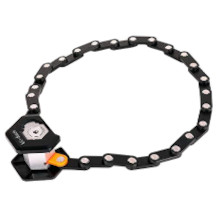
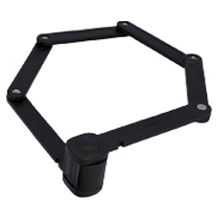
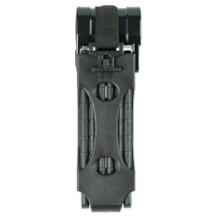
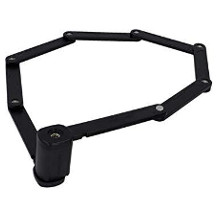
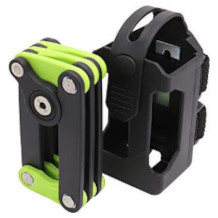
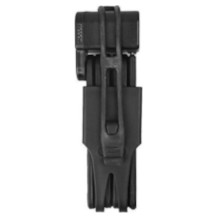
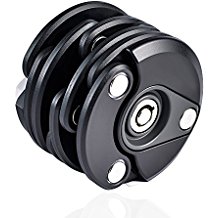
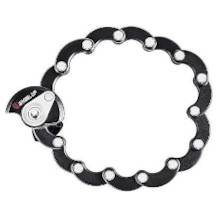

 4,179 reviews
4,179 reviews

